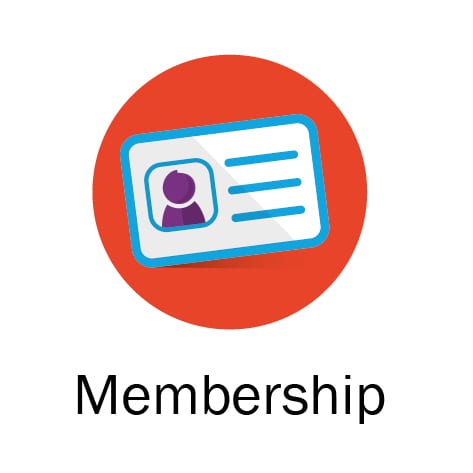Eight digital workplace and intranet insights from the DWG annual survey

The digital workplace is a fast-moving area in which new technologies and tools are continually being introduced and teams are experimenting, innovating and learning. Even the humble intranet has gone through a transformation in recent years, emerging as a user-centred entry point to a wider digital ecosystem rather than just an internal communications channel.
With the digital workplace still evolving, it’s important to track the trends and see what’s happening. Each year, as part of our research programme, DWG runs a detailed annual survey for members and non-members that gives us a fascinating snapshot of the world of intranets and digital workplaces. We ask what technologies are being used, how aspects of the digital workplace are being managed and about the strategic objectives ahead.
This year we’ve sifted through more than 80 responses, crunched the numbers and analysed the results. Here are the eight key insights emerging from the 2019 DWG annual survey.
1. Everyone’s thinking about employee experience
“Employee experience” is an en vogue topic that many intranet and digital workplace teams have been considering lately. How do we make sure that the various digital touchpoints that employees experience are of sufficient quality to drive engagement and efficiency? At last, organizations are starting to realize the importance of putting as much effort and investment into the employee experience as they already do with the customer experience.
The high interest in the topic was reflected in the DWG survey. Each year respondents are asked to vote on the subjects to be covered by the DWG research programme. This year the runaway winner and most popular topic was employee experience and the contribution the digital workplace makes to it. It’s going to be a fascinating report!
Related resource: PODCAST: Why experience is the heartbeat of a modern digital workplace
2. SharePoint Online is becoming the dominant intranet platform
Of course. SharePoint has been the most popular base technology for intranets for a long, long time but recently more and more companies have been moving to the cloud, with Office 365 and SharePoint Online now emerging as the number one base technology for intranets. The extent to which this is happening is confirmed by the survey.
According to our survey 43% of companies have used an intranet based on SharePoint Online in the last 12 months, although exactly the same number (43%) have used one based on SharePoint on-premises. However, the figures differ dramatically for the plans for the next 18 months, with 30% of respondents saying they will be deploying SharePoint Online to use for their intranet compared with only 2% for SharePoint on-premises. SharePoint Online is clearly in the ascendancy.
Related: Sharepoint evaluation & strategy
3. The majority of organizations are planning a chatbot
The deployment of chatbots in the digital workplace has been an area of interest for many teams, both to drive efficiencies and automation and to engage users. Interest in the potential of chatbots has remained high for a while, but looks as if it is now resulting in actual investment and chatbot projects. When we asked respondents which emerging technologies they had used over the past year, a quarter said their organization had deployed a chatbot. However, most significantly, over half (56%) said they intended to deploy a chatbot in the next eighteen months. Chatbots are go!
Related research: BRIEFING PAPER: The Intelligent Digital Workplace Assistant: An introduction for digital workplace teams
4. Internal communications is taking more interest in the digital workplace
We asked respondents to identify which teams owned the intranet and the digital workplace in their organization. In recent years we’ve seen a clear trend of internal communications owning the intranet (sometimes jointly with IT), and IT being most likely to own the digital workplace.
This is still the case, with 68% of intranets owned or co-owned by communications and 57% of digital workplaces owned or co-owned by IT. But we also saw an increase in the percentage of internal communicators owning or co-owning the digital workplace, rising from 31% to 36%. This is a modest rise, but it mirrors a trend we see anecdotally: more internal communications teams appear to be taking a holistic view of the entire digital ecosystem, positioning the intranet as an integrated tool and front door to the wider digital workplace.
Related research: FREE EXECUTIVE SUMMARY: The changing role of Internal Communications
5. Traditional methods still dominate digital literacy initiatives
Our wider research work points to a significant and growing interest in the topic of digital literacy . Organizations are realizing that upskilling staff in using digital tools and new ways of working is not only critical for driving adoption of the tools, but will also become increasingly important as jobs and roles shift because of automation. In our survey we asked respondents to list their main means of driving digital literacy. Perhaps unsurprisingly, most methods were quite traditional, with online or classroom training (73%), online communities (51%), drop-in sessions (34%) and digital champions (34%) proving the most popular. While these may seem unimaginative, it is encouraging that many respondents are actively pushing digital literacy.
Related research: FREE REPORT EXCERPT: Raising your organization’s digital IQ: How to improve digital skills
6. Most intranets are available to a high proportion of employees and are personalized
One of the strengths of corporate intranets is that they are usually open for all employees to access. Our survey suggests that the average proportion of employees able to access the intranet is around 89%, while three quarters of intranets are reaching 90% or more of employees.
With such a high number of employees accessing a single platform, many teams rely on personalization to ensure relevant content and experiences are delivered to complex and diverse workforces. In fact, our survey suggests that 63% of intranets use personalization. Interestingly, looking back over the last few years of the survey, figures relating to the proportion of employees who can access the intranet, and the percentage of intranets that are personalized, have remained reasonably static.
Related research: FREE EXECUTIVE SUMMARY: The personalized intranet
7. Enterprise mobility continues to improve
Each year of our survey shows enterprise mobility improving. In fact, the proportion of organizations reporting that employees cannot access the intranet on a mobile device has dwindled to 7%. Back in 2013, the comparable figure was 37%.
The quality of the mobile user experience also appears to have risen in the past year. For the first time, a majority of respondents (51%) reported that their intranet is available on both personal and corporate devices, and is optimized. Last year, the figure was just 33%.
Related research: FREE EXECUTIVE SUMMARY: Evolving the employee mobile experience: Six key approaches for success
8. Better search is a priority
The 2019 survey gives a strong sense that improving search is now a real focus for intranet and digital workplace teams. Each year we ask teams to highlight their five top strategic objectives for the coming eighteen months. Usually the same themes come out top – for example, driving adoption, developing a digital workplace strategy or embedding governance. But we were surprised to see “Search and Findability” appear as the joint most popular strategic objective (43%), having been the eighth most popular choice (32%) last year. It seems that more and more organizations are realizing the importance of search, perhaps reflecting users’ high expectations in this area. Of course, if search gets better, then everybody wins.
Related research: FREE REPORT EXCERPT: Intranet Search: A holistic approach to management
Keeping an eye on trends in the digital workplace
Trends in the digital workplace keep on emerging and here at DWG we will keep an eye on what’s happening. If you’d like to stay informed you can also read our expert blog, tune into our Digital Workplace Impact podcasts and also follow our 2019 research programme!
DWG members have unrestricted access to our best practice Research Library of 70+ reports covering key areas such as strategy and governance, personalization, user experience and change management for intranets and digital workplaces.
Find out what else is in the library and new research that’s coming up or contact us to learn how to gain access to this library via DWG Membership.
RESEARCH AND RESOURCES
- Paul Miller’s top ten digital workplace predictions for 2019
- FREE REPORT: Digital Workplace 2030: Preparing now for the digital worlds of work to come
TAKE THE NEXT STEP
Categorised in: Intranets


